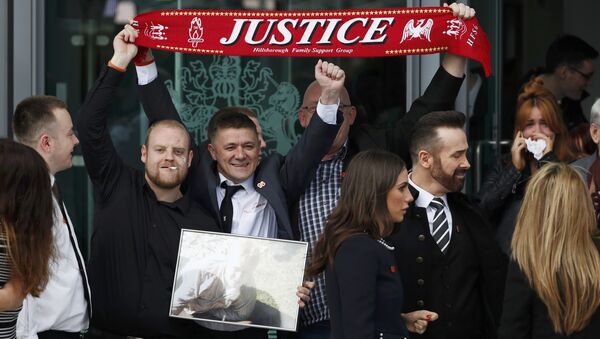On 15 April 1989, a football match to decide a semi-final round of the FA Cup competition was to be played between the Liverpool and Nottingham Forest Clubs. Only six minutes into the game, play was stopped when it was realized that spectators on the terraces behind the Liverpool goal had been severely crushed. In the result, 96 died and over 400 received hospital treatment.
It has taken 27 years for the families of the bereaved to get justice, which may now happen with the result of the jury, blaming the police and the operators of the stadium.
After a two-year hearing, the jury found that the deaths were caused:
"As a result of crushing in the central pens of the Leppings Lane terrace, following the admission of a large number of supporters to the stadium through exit gates."
They said it was due to "error or omission in the police planning and preparation" for the semi-final and that there had also been an "error or omission in policing on the day of the match," leading to the slow response to the unfolding crisis.
PM: I would like to pay tribute to the extraordinary courage of #Hillsborough campaigners in their long search for the truth.
— UK Prime Minister (@Number10gov) 26 April 2016
The jury found that South Yorkshire Police Match Commander, Chief Superintendent David Duckenfield had made errors in match planning and response, failing to order the closure of gates that could have presented the crush. They also found there were defects in the design and layout of the stadium that also contributed to the disaster.
A banner outside court in Warrington at the #Hillsborough inquests pic.twitter.com/SS3iMzfs8u
— Liverpool Echo (@LivEchonews) 26 April 2016
Asked, "Are you satisfied, so that you are sure, that those who died in the disaster were unlawfully killed?" The jury replied "yes," which will now mean the possibility of criminal action being taken.
Background to the Disaster
On 15 April 1989 a football match to decide a semi-final round of the FA Cup competition was to be played between the Liverpool and Nottingham Forest Clubs. The neutral venue chosen was Hillsborough Football Stadium, Sheffield Wednesday's ground.
As the match started, amid the roar of the crowd it became apparent that in the central area of the Leppings Lane terrace, already visibly overcrowded before the kick-off, Liverpool fans were in considerable distress.
Thinking of the #Hillsborough families today#JFT96 pic.twitter.com/PYY12vWLkl
— Dave Smith (@DaveBlacklist) 26 April 2016
Only six minutes into the game, play was stopped when it was realized that spectators on the terraces behind the Liverpool goal had been severely crushed. In the result, 96 died and over 400 received hospital treatment.
What followed, over an 11-year period, were various different modes and levels of scrutiny, including Lord Justice Taylor's Interim and Final Reports, civil litigation, criminal and disciplinary investigations, the inquests into the deaths of the victims, judicial reviews, a judicial scrutiny of new evidence conducted by Lord Justice Stuart-Smith, and the private prosecution of the two most senior police officers in command on the day.
Justice at last for the 96 victims of the Hillsborough Disaster. Nobody should ever go to a football match & be killed. 27 years of misery
— Chris Kamara (@chris_kammy) 26 April 2016
Despite this range of inquiry and investigation, many bereaved families and survivors considered that the true context, circumstances and aftermath of Hillsborough had not been made public. In January 2010, the Hillsborough Independent Panel, chaired by James Jones, Bishop of Liverpool, was appointed, which eventually led to the two-year inquest which concluded Tuesday (April 26).


